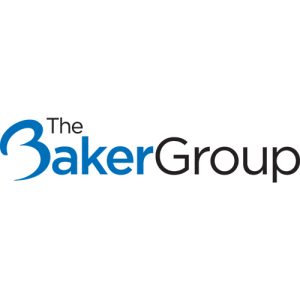As we head towards an upcoming easing cycle from the Fed, we should be ever mindful that we do not have the crystal ball when it comes to predicting interest rates.
The last several years have been nothing but an ever-changing, dynamic environment for financial institutions to operate in. First, the pandemic induced the recession of 2020, followed by historic low interest rates across the entire yield curve. Second, the historically low-interest environment quickly turned into the most aggressive tightening cycle from the Fed since the 1980s. Liquidity levels and interest rates swung in many directions over the course of the last few years. As senior management and investment portfolio managers look back over the decisions (or indecision) they made regarding the investment portfolio, many wish they would have done a handful of things differently. Typically, most portfolio mistakes are made at or near the trough or peak during any given rate cycle. As of the date of writing this article, it is all but a foregone conclusion that the Fed will cut rates in September. We have already seen the bond market yields fall in the last few weeks in anticipation of impending interest rate cuts. The following are words of wisdom for investing during the next cycle of falling rates:
- A community financial institution’s bond portfolio is not a hedge fund. I’ll go ahead and use a baseball reference: We aren’t always trying to hit home runs with our bond purchases; rather, we are typically looking for singles and doubles. The portfolio doesn’t live in isolation as it is part of a broader balance sheet with loans and deposits. Excess return or earnings are always a goal of the investment portfolio but may not always be the primary objective. The portfolio must also satisfy the institution’s liquidity, interest rate risk and safety of principal, and pledging needs. The portfolio isn’t a vehicle for speculating and making large bets on the direction of interest rates.
- There is no free lunch in the bond markets. When investing in bonds, you’re always making trade-offs between risk and reward. Yield and risk move hand in hand. Typically, if you are comparing two different bonds that look similar in risk, but one has a lower price and therefore higher yield, there is some difference in the amount of liquidity, credit or interest rate risk. Sometimes, the difference in risk is clear, and sometimes, it can be hidden a little bit.
- Interest rate risk is a two-sided coin. I teach several banking schools where I like to ask this trick question: Which has more interest rate risk, a three-month Treasury bill or a 10-year Treasury bond? Most of the students tend to pick the 10-year Treasury bond because it has a longer maturity and, therefore, longer duration than a three-month Treasury bill. They both have interest rate risk, but different types. The reinvestment risk of a three-month Treasury bill is higher than a 10-year Treasury bond due to its maturing every three months with the investor subject to market rate movements over that three-month period. The 10-year has more long-term interest rate risk or price risk. If the 10-year Treasury bond is held for the entire 10-year period, the yield will not change. However, the unrealized gain or loss (value) will fluctuate based on the movement of market rates. Understanding this dynamic in fixed-income investing is important, especially in times when the inverted yield curve is tricking you into keeping a lot of your dollars in the shorter part of the curve. Late-cycle investing typically involves moving towards protecting the yield or income of the portfolio versus the value of the portfolio.
- There are good ways and bad ways to extend duration. Traditional late-cycle fixed-income investment strategies typically involve some level of extension of duration to ensure the “locking” in of yield over a longer period. Extending duration needs to be done in a prudent manner with bonds that have some level of call or prepayment protection. Sacrificing structure for extra yield is not a strategy that typically ends well. The bonds that provide less call or prepayment protection are typically going to yield more than those that provide adequate call or prepayment protection. As portfolio managers look to extend duration to protect future yields, they must do so in a prudent manner.
- Waiting for where rates used to be can cost you. Trying to buy bonds at or near the peak in the rate cycle is a challenging and usually impossible task. However, a better approach is to participate in the market as liquidity allows by deploying excess liquidity through a well-thought-out investment strategy. The investor should think about “time in the market” and not “timing the market.” It’s easy to think you missed the peak in rates and not take any action. Market interest rates, like the treasury markets, tend to lead the Fed Funds Rate both up and down.
As we head towards an upcoming easing cycle from the Fed, we should be ever mindful that we do not have the crystal ball when it comes to predicting interest rates. Instead, we should stick to our written investment strategy of building a portfolio of bonds with stable and predictable cash flows to complement our entire balance sheet. Utilize the words of wisdom in this article to ensure we can build a higher-performing portfolio at the start of this next rate cycle.









